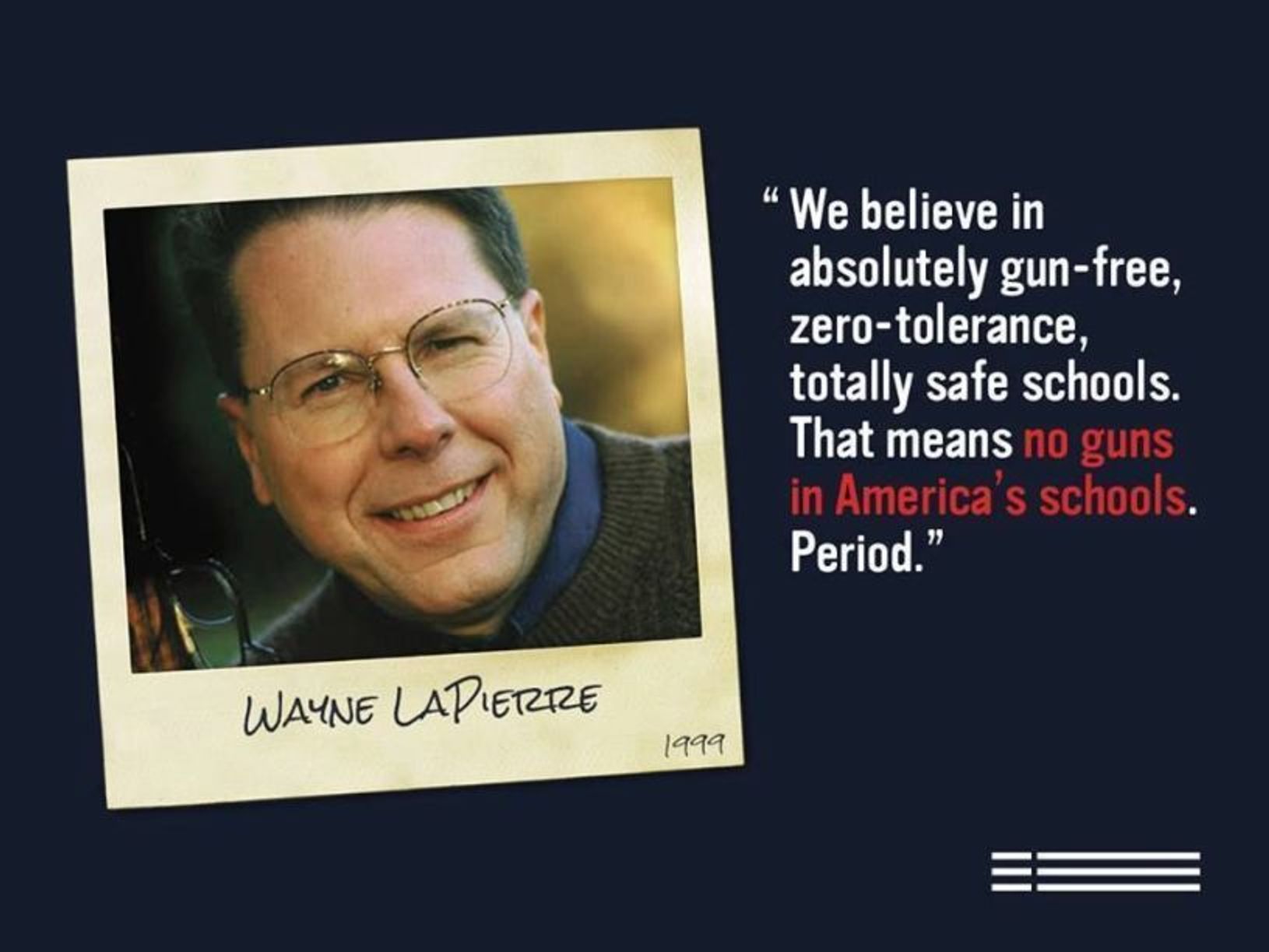
The following graphic was circulated by anti-gun group Everytown when Wayne LaPierre, CEO of the National Rifle Association, called for increased security staff in schools last year. The graphic claims to quote a speech he gave in 1999.

The following graphic attempts to summarize Cognitive Biases, which are the many ways our brains take shortcuts to try to make sense of a complex world. These mental shortcuts can cause us to make mistakes of interpretation. What do our brains bring to the mix that can make it hard to objectively evaluate media sources?
Click to enlarge this image in order to view the different categories of Cognitive Bias. Then, consider the social media image below. (can click to view in context)
(Originally created as a part of this article.)
In your group, look at these similar articles on the health benefits of chocolate.
Examine their interpretation of the research and what source(s) they are citing for the claim (if any). Try to find your way back to the original source.

In your group, consider the following:
Answer the following questions, and be prepared to share your responses with the class
Go to the website socrative.com. Enter the Room Name 446793 and describe where you typically get your news.